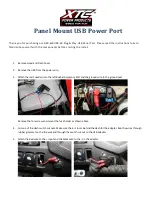
R
ABS (Anti-lock Braking System)
R
BAS (Brake Assist System)
R
BAS PLUS* (Brake Assist System Plus*)
R
Adaptive brake lamps
R
ESP
®
(Electronic Stability Program)
R
EBV (electronic brake-power distribution)
R
ADAPTIVE BRAKE
R
PRE-SAFE
®
Brake* (vehicles with Distronic
Plus*)
i
In wintry driving conditions, always use
winter tyres (M+S tyres) and if necessary,
snow chains. Only in this way will the driv-
ing safety systems described in this section
work as effectively as possible.
G
Risk of accident
The risk of an accident is significantly
increased by driving too fast. This is particu-
larly the case when cornering as well as on
wet or slippery roads or when driving too close
to the vehicle in front.
The driving safety systems described in this
section can neither reduce this risk nor over-
ride the laws of physics.
For this reason, always adapt your driving
style to suit prevailing road and weather con-
ditions. Maintain sufficient distance from
other road users and objects on the road.
ABS (Anti-lock Braking System)
ABS regulates brake pressure in such a way
that the wheels do not lock when you brake.
This allows you to continue steering the vehi-
cle when braking.
ABS works from a speed of about 8 km/h
upwards, regardless of road-surface condi-
tions. ABS works on slippery surfaces, even
when you only brake gently.
G
Risk of accident
Do not depress the brake pedal several times
in quick succession (pumping). Depress the
brake firmly and evenly. Pumping the brake
pedal reduces the braking effect.
Braking
G
Risk of accident and injury
Vehicles with BlueHYBRID*: make sure that
you read the "BlueHYBRID" supplement. You
may otherwise fail to detect dangers.
If ABS intervenes when braking, you will feel
a pulsing in the brake pedal.
X
If ABS intervenes: continue to depress the
brake pedal with force until the braking sit-
uation is over.
X
To make a full brake application:
depress the brake pedal with full force.
G
Risk of accident
If ABS is faulty, the wheels could lock when
braking. This limits the steerability of the vehi-
cle when braking and the braking distance
may increase.
If ABS is deactivated due to a malfunction,
then BAS, BAS PLUS* and ESP
®
are also
deactivated. There is an increased risk of your
vehicle skidding in certain situations.
You should always adapt your driving style to
suit prevailing road and weather conditions.
BAS (Brake Assist)
G
Risk of accident and injury
Vehicles with BlueHYBRID*: make sure that
you read the "BlueHYBRID" supplement. You
may otherwise fail to detect dangers.
BAS operates in emergency braking situa-
tions. If you depress the brake pedal quickly,
BAS automatically boosts the braking force,
thus shortening the stopping distance.
Driving safety systems
53
Saf
ety
* optional
221_AKB; 2; 3, en-GB
bjanott,
Version: 2.11.7.7
2009-02-27T14:56:10+01:00 - Seite 53
Z
Dateiname: 6515231002_buchblock.pdf; erzeugt am 03. Mar 2009 15:16:53; WK















































